Established career in new materials: Peter Yeadon (BEDS ’87, MArchFP ’89)
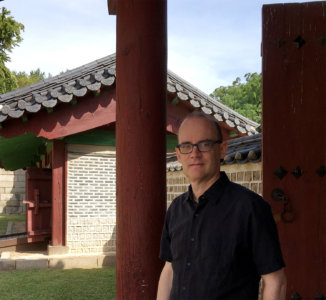
“Find a mentor who does what you want to do. If they’re not listening to you, or if they use the word “should”, find a better one.” -Peter Yeadon
Peter Yeadon (BEDS’87, MArchFP’89) is committed to maintaining a balance between teaching, research and practice. At the Rhode Island School of Design, he teaches courses that exploit advanced technologies to spur design innovation. He is known for his pursuit of new applications for novel materials, particularly smart materials and nanotechnology. He has received numerous awards for his work, and has lectured and written on the topic of emergent materials extensively. He is a licensed professional architect in the State of New York, and is the founder of Yeadon Space Agency in New York City. Read the following Q&A for details on Peter’s dynamic career.
Why did you pursue an Architecture education at Dal?
All of my four siblings studied at Dalhousie. We grew up in a small town in Nova Scotia and, you know, I think it was the only college that I applied to. I remember reading about the program when I was a teenager, while visiting one of my sisters at Dal, and being attracted to the program’s internship semesters abroad. It seemed like an opportunity to get out of the region, earn a little cash, and acquire some experience.
Our family had a hardware and building supply company, plus a mill for manufacturing building materials and components, so I started making things and helping out at some construction sites at a pretty young age. I was probably lulled into architecture through those early experiences of drawing and making. It was fun, and only occasionally painful.
What were, in your opinion, the best aspects of the program? What were your best student experiences?
I think it’s the people who make a learning experience exciting and worthwhile. My classmates were exceptionally talented, better read, and vastly more traveled than I was. It was intense, bewildering and inspiring to be with them. I was lucky; I was pushed and I loved the challenge. I also had many excellent studio professors, in just the right sequence: Brian in the beginning, Stephanie and Ted in the middle, and Steve and Grant at the end.
“I was highly impressionable, initially, then I was learning how to learn, and then I had the right help finding my voice. Really, the best experiences caused me to change my perspective or thinking, which happened frequently and throughout my studies there.”
Where did your career take you after graduation? How did it evolve?
My career was launched into a recession, which was difficult for all of us, so I did whatever creative work I could manage. I did model-making, construction work, graphic design, furniture design, architecture, and product design. I was awarded some art grants, made artifacts, and started exhibiting. I won some competitions and wrote articles for publications. I was roaming around, living in different cities and exploring various forms of creative inquiry, or practice. It was an uneasy but diverse beginning.
Eventually, my work started becoming more visible, so I was invited to guest lecture at some universities. I taught at the University of Toronto, and then Cornell invited me to teach, and then the Rhode Island School of Design. In retrospect, well, it was really messy at times, but all of this creative, multidisciplinary work eventually evolved into a rather focused agenda of teaching, research, and practice.
Tell us about winning the 1999-2000 Prix de Rome? What impact did it have on your path and where you are today?
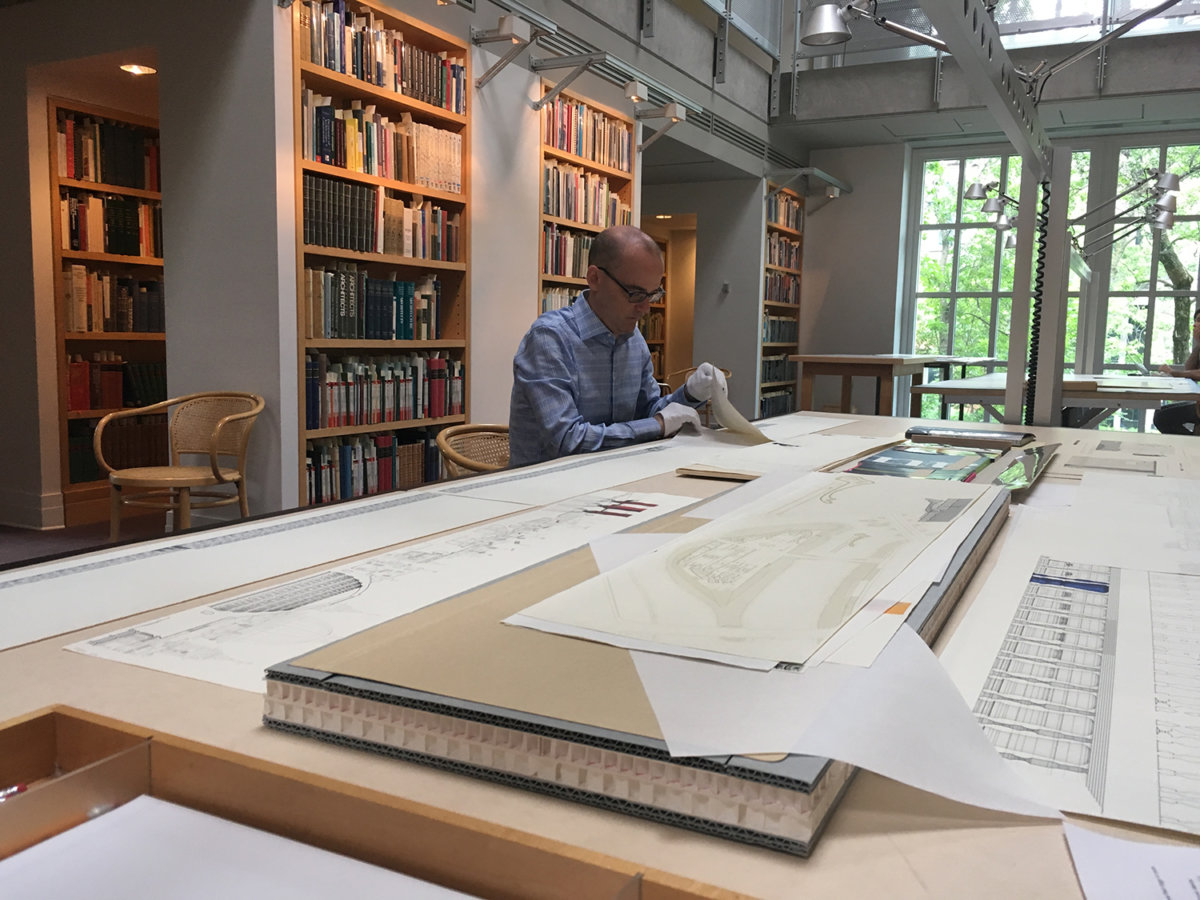
Peter reviews his Prix de Rome prize wining work at the Canadian Center for Architecture
“The prize was pivotal, and disruptive … everything you’d want it to be.”
It provided me with an opportunity to conclude a body of work that examined the merits of visionary architecture. Moreover, I got to reflect on how emerging technologies inspired, then propelled, advancements in architecture, and I began to consider how new discoveries might eventually drive innovation in architecture and design in the 21st Century, specifically, discoveries in nanotech and synthetic biology. And of course, to live in Rome for a whole year was priceless. I had enough time to form substantial, rewarding relationships with scholars, practitioners, and Rome Prize Fellows from across the globe. I developed many important, lasting friendships there.
We understand your current area of interest is advanced materials. How long did it take you to figure out where your interests were centered?
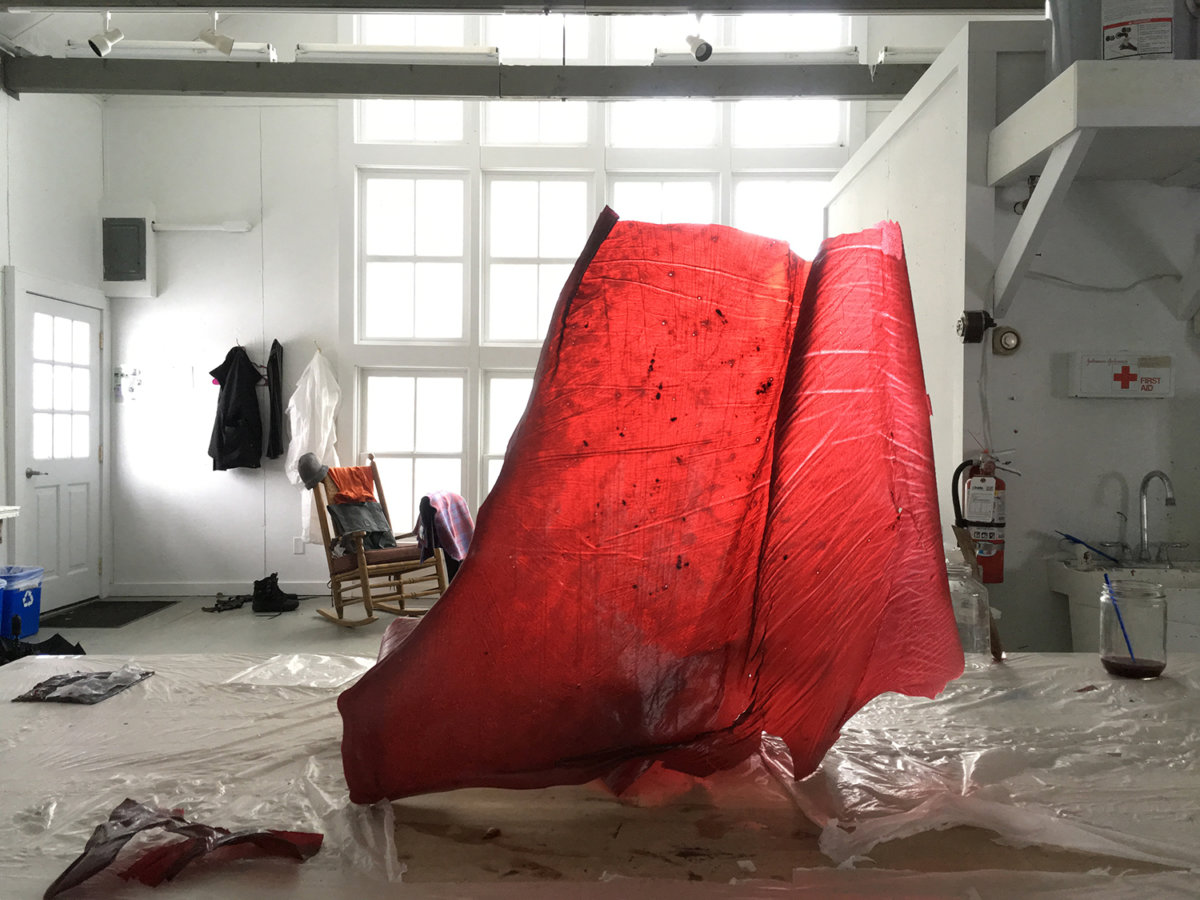
Fungus-based bioplastics
Yes, I guess you could say that I major in applications for smart materials and nanomaterials, in architecture and design, and minor in biomaterials. It took me nine years to find that focus, followed by three to develop a path, and then another fifteen years to acquire the expertise. The first third of those fifteen was spent reading, writing, and then lecturing on smart materials and nanotechnology in architecture. The middle third involved gaining experience in working directly with smart materials and nanomaterials, in projects; and for the past five years, I’ve been partnering exclusively on collaborative projects that require some proficiency in advanced materials. Fortunately, interest new materials cuts across many fields and sectors, and doesn’t expire. It’s constantly evolving.
You are a Professor at the Rhode Island School of Design (RISD) as well as the principle of two companies you founded. Can you explain what your career looks like today?
My three jobs represent three different approaches to pursuing materials-driven innovation. Design Catalyst is a company that I founded with Paolo Cardini, who is an incredible industrial designer. Our team helps American defense manufacturers create and develop new products that exploit their knowledge, skills, and extraordinary capabilities in advanced manufacturing. All other projects and partnerships that are not funded by the DOD’s defense industry diversification initiative, but that involve materials-driven innovation in architecture and design, are executed by Yeadon Space Agency in New York City.

Disaster Go Bag prototype by Yeadon Space Agency
At RISD, my students also explore applications for smart materials, nanomaterials, and biomaterials in products and environments. They work directly with some of these materials, and our studies are often supported by researchers, manufacturers, and industry partners who can help the students develop and prototype their ideas. I lead a multidisciplinary grad seminar, called Nano-Meso-Micro-Macro, that’s open to all students at RISD. They work with substances that emit light, change shape, and change color. I also lead an advanced design studio, called Smart Matter. In that course, my industrial design students will have some additional material technologies to work with, including some smart foams and conductive polymers. This semester, it’s supported by two manufacturers, one that I’ve collaborated with through Design Catalyst and one that I’ve work with through Yeadon Space Agency.
Tell us about living in New York City. Does the city inspire the work that you do?

Always exploring, Peter visits a doll museum in Busan, Korea
I love new experiences, more than anything, and this great city is utterly inexhaustible in that respect. It sometimes feels like the whole world is here, all at once, or is frequently passing through … it is both humbling and inspiring to be a dot in this dense cloud of global excellence. You don’t even have to look for creative stimulation and the kind of talent you’d want to collaborate with; it just surrounds you and you bump into it. I also love New York’s focus on envisioning the future, and what might be. Much of that is bottom-up, led by citizens who take risks and who are visionary; it does not come from the kind of top-down programs that you’d find administered in other cities.
“The City is also big enough to promote a rich mix of diversity, and understands that sameness is disastrous for creativity, and evolution.”
You delivered part of the “RISD in Seoul” program in Korea last semester and a workshop in China before that. Can you tell us about the highlights from these programs?

Peter with students from the China Academy of Art
Yes, we have many global programs and initiatives on various continents. I led a five-week workshop at the China Academy of Art last spring, and I led the RISD in Seoul program last fall, which is a multidisciplinary program that we recently established. Any RISD student can apply to be chosen for the program, which includes Korean students from our academic partner in Seoul, Ewha Womans University. I had students from nine different art and design disciplines, working together on a collaborative project and meeting renowned artists and designers in Korea.
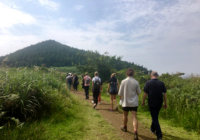
Peter and RISD students exploring Jeju Island
We took four trips outside the city, to enhance our understanding of Korea. We were escorted into the DMZ by the UN Command, which was exciting and timely. I also took them to Jeju Island, on a nature and landscapes trip. We visited Samsung, POSCO, and other companies during my industrialization and globalization trip. We also did a Templestay in the mountains, as part of the temples and villages trip. But for me, personally, one of the highlights was seeing so many of our alumni, who were once my students and who are now my peers.
What current projects are you most excited about?
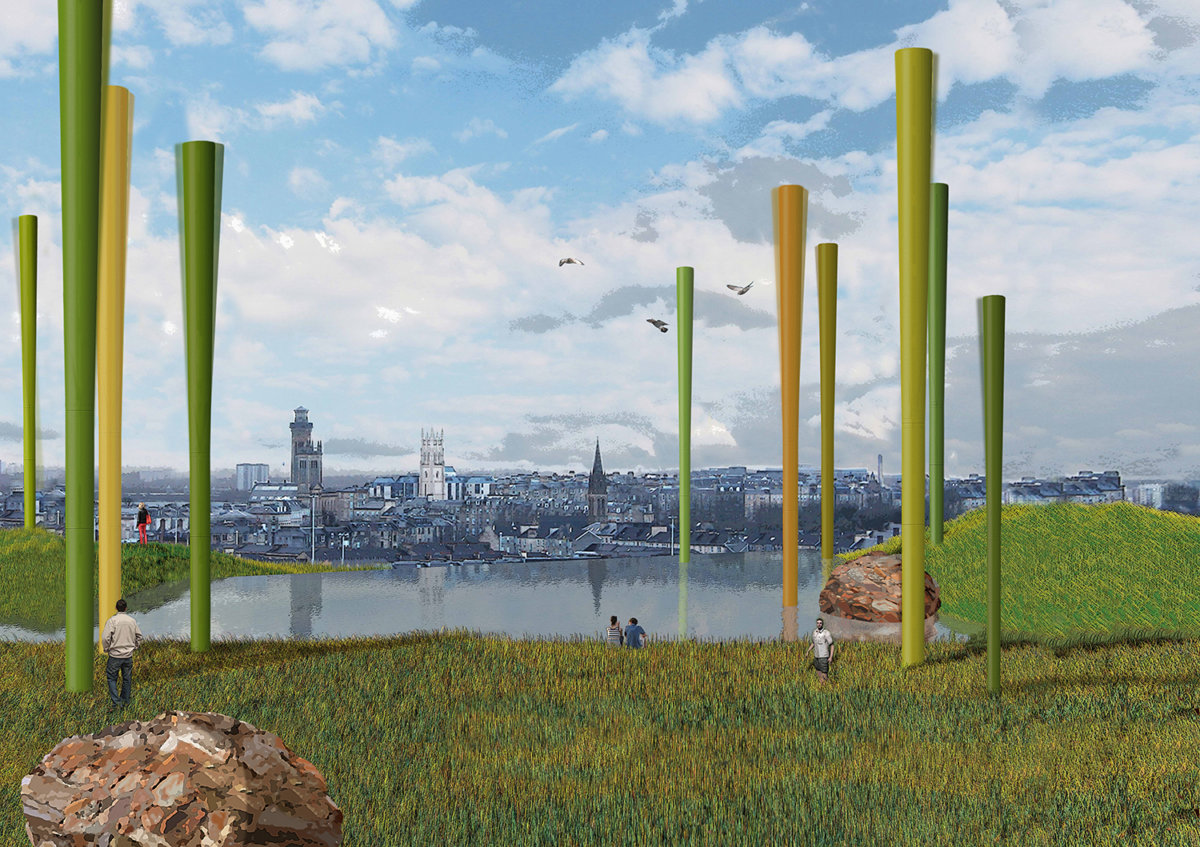
Wind Forest project by Yeadon Space Agency, Dalziel + Scullion, Qmulus, and ZM Architecture
I’m jazzed about our Wind Forest project in Glasgow, if the oscillation turbines can get past the prototyping stage. If it’s fully implemented, it’ll make use of a range of smart materials. We have a great team and it’s the largest open project that I have right now that’s for an urban site. Our work with the defense manufacturers has also been fascinating. We’ve worked with four manufacturers so far, and they’re not the least bit alike, so it has been rewarding to learn from them and then readjust the program that we have devised for them.